2nd April 2019 Guatemala City, Guatemala
El Mirador trek: channelling your inner Indiana Jones
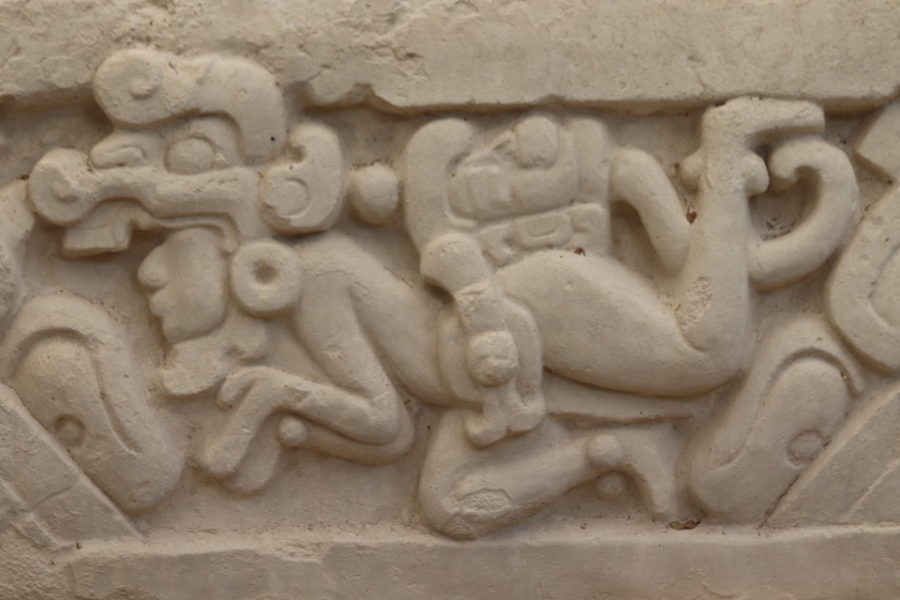
Indiana Jones made archaeology sexy. In the UK, though, it’s difficult to replicate that sense of adventure around archaeological digs. One of the most famous discoveries in recent years was that of the remains of King Richard III (died 1485) – he was found under a car park in Leicester. It somehow lacks the exoticism that we would-be Indianas crave!
Guatemala, on the other hand, has all the right ingredients: ancient Maya civilisations dating back over 2000 years, remote areas of jungle where nature has re-enveloped whole cities and the only way to get there is on foot. What’s not to like?
So, fired up by our enthusiasm for adventure, four of us (my husband, our elder son, a French friend and I) set off last month for the trek from Carmelita to El Mirador and Nakbe in northern Peten. We were in good company: we had a guide, a cook, and a mule man; the latter’s weighty responsibility was to look after the mule train of 5 mules carrying our luggage, tents, camping gear and food and water.
Our trek involved 6 days of walking, 5 nights of camping. Every camp was in an ancient Mayan site – El Tintal (the first and last nights), 2 nights at El Mirador and a night at Nakbe. Every evening we’d climb a temple or pyramid built by Mayan hands over 2000 years ago and marvel at the vastness of the Mayan Biosphere spread before us; the uniformity of the forest only broken by other “hills” which of course were not hills but more Mayan structures.
El Mirador was first “discovered” by archaeologists in the late 1960’s. Whilst flying over the north of Peten, the “hills” below gave cause to think about what really lay beneath the jungle canopy. El Mirador’s tallest temple, and the largest structure in the world by volume, La Danta stands 72 metres tall and with a base measuring 300 by 600 metres. Monumental in every sense. El Mirador, or the City of the Kan Dynasty, was abandoned in around 150AD, when the combination of environmental destruction and assaults by warring factions from the north (Teotihuacan) and the south (Tikal) put an end to its splendour. 500 years later settlers returned but to live rather than to build. And in around 900AD, it was abandoned again. Most Mayan experts believe these great civilisations disappeared because of their over-exploitation of the natural resources they relied on. Indeed, it is clear from visiting El Mirador that construction on a grand scale must have been the all-consuming activity of its inhabitants. The famous frieze carving (below) portraying a scene from the Popol Vuh was part of the decoration on the side of a causeway.
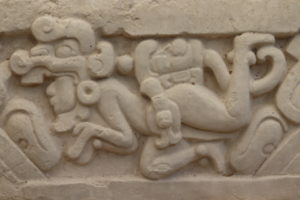
Famous Frizo at El Mirador
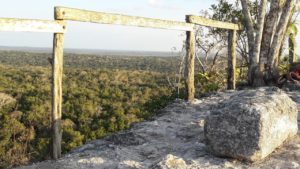
View from La Danta
There are two reasons to do this trek – to see Mayan sites that are otherwise inaccessible and to experience the Guatemalan jungle/forest at first hand. The sites are fascinating, largely because they are still very much archaeological digs. Raw history. Not the neatly excavated versions of Tikal. Your imagination has to work harder, but the surroundings mean that’s not difficult.
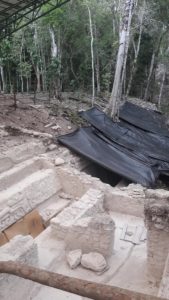
Excavations
But the jungle itself would be reason enough to do this walk. From the primeval roars of the howler monkeys to the chattering of parrots and liquid electric calls of the fabulously named Montezuma’s oropendula, it’s a walk with an incredible soundtrack. The forest also constantly changes, from tropical palms, to lowlying scrub and thorn, to tall trees reminiscent of European birch forest. We marvelled at strangler figs, pepper trees and magnificent orchids, not to mention prolific insect life – leafcutter ants whose clear paths on the jungle floor rivalled any Mayan causeway, a ferocious looking insect in some Mayan tombs that reminded us of hairier moments in Indiana Jones’ films and the ubiquitous ticks, which everyone worries about but were thankfully low in number and easily spotted!

Orchids spotted in our walk!
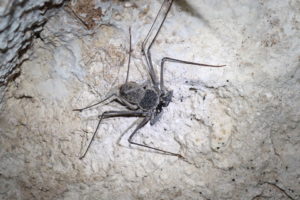
Ferocious insect
It was a truly amazing experience. I would encourage anyone spending any time in Guatemala to do it. It’s also a salutary lesson on what happens to major civilisations when they over-exploit their natural environment. A lesson that has just as much relevance today as it did in 150AD.
Hi,
That’s a very great post.
The Article is Awesome to read. I have been reading your articles and they are really very helpful for me. Thanks for sharing with us your Post. Very good information.
REFER:- https://www.desireclinic.in